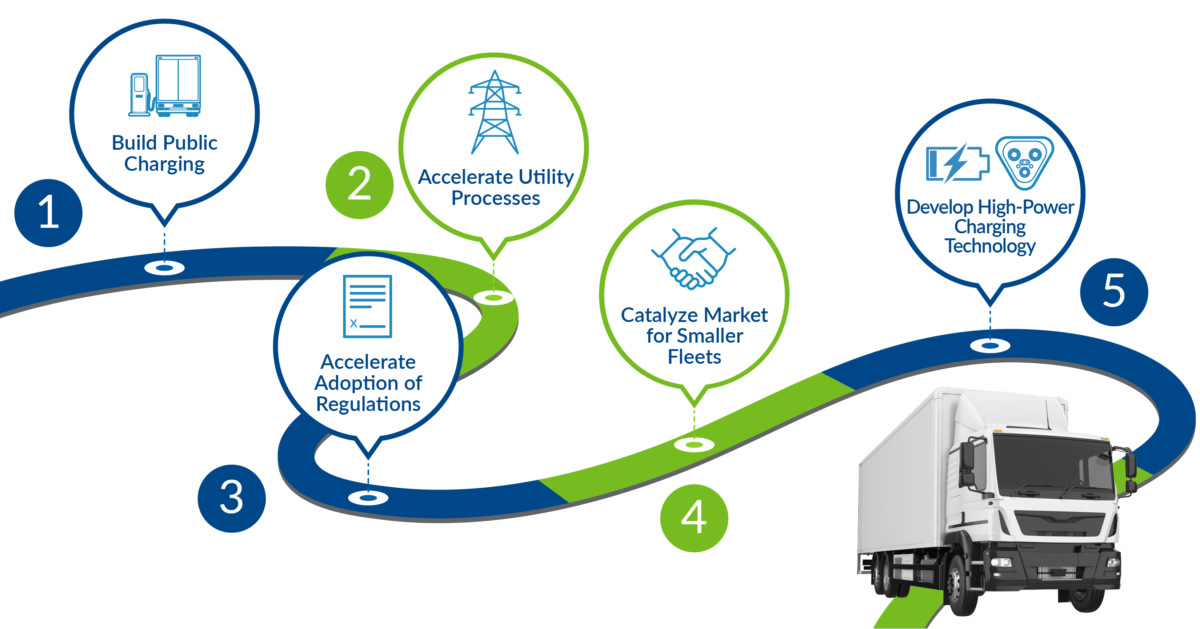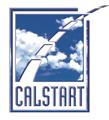New Year, New Priorities:
CALSTART’s Top 5 Action Items for Accelerating
U.S. Zero-Emission Truck Adoption in 2024
By Jessie Lund
Looking back at 2023, the trucking industry’s biggest headline of the year is obvious—the bonuses Taylor Swift paid the drivers for her Eras tour. Yet another good-news story also rose to prominence: Zero-emission trucks (ZETs) are more popular than ever.According to CALSTART’s new Zeroing in on Zero-Emission Trucks report, as of June 2023, more than 17,500 ZETs have been deployed across the United States. Not ordered. Not sold. But deployed into the hands of customers, registered with the Department of Motor Vehicles, and placed into service—eliminating significant pollution in the communities in which they operate.
ZETs are now operating in every state (up from 45 states in the last report) thanks to a combination of complementary industry trends, including regulations and incentives that send a clear and compelling market signal to industry, investment in charging infrastructure, expanded model availability, and increasingly large-scale deployments. Though ZET deployments continue to increase, more action is needed to spur the market growth justified by environmental justice considerations and climate science as well as to be ready to comply with existing and anticipated regulations.

CALSTART has identified the following five priority actions to propel ZET deployments forward in 2024 and beyond:
- Build public charging. There are historic levels of funding for ZETs and infrastructure available NOW. Seize the opportunity and build out truck-accessible chargers in priority urban areas and along key freight corridors. Public and shared charging infrastructure is critical for equitably increasing access to ZET technology. Thankfully, we know generally where this infrastructure will be needed first, enabling the industry to act now. And corridor-level planning is already underway across the country.In 2024, look to additional states to offer infrastructure funding programs like California’s EnergIIZE Commercial Vehicles Project and Colorado’s Fleet-ZERO grant program—and take advantage of them! On the federal side, the first round of awardees for the Charging and Fueling Infrastructure Discretionary Grant Program were announced last week, including 11 corridor projects and approximately $252 million in funding for infrastructure projects that support medium- and heavy-duty vehicles. Be sure to keep an eye out for the opening of the next round of applications.
- Accelerate utility processes. Utilities are key partners in reaching our zero-emission goals, but upgrade processes can take years to complete. Let’s bring industry stakeholders and utilities together to update and hasten timelines for grid assessments, upgrades, and charger energization. In 2024, engage with utilities and public utilities commissions to guide how they can better and more quickly support the transition to ZETs. Encourage them to seek advice from end-user fleets. And get familiar with promising, innovative near-term solutions like the “3 M’s”: mobile charging, managed charging, and microgrids.
- Accelerate adoption of regulations. Regulations like the Advanced Clean Trucks and Advanced Clean Fleets rules have been incredibly important drivers of ZET deployments to date, sending clear market signals even before they officially went into effect. Most states have yet to adopt these regulations, however, so encouraging more states to pass such effective regulations should be a priority for 2024. Also this year, the Environmental Protection Agency should finalize a strong “Phase 3” heavy-duty greenhouse gas standard to ensure communities nationwide benefit from ZET technology and to help unlock the investments necessary to support clean transportation. Finalizing the rule as soon as possible in 2024 will give truck manufacturers plenty of time to plan for compliance, which will first impact model year 2027 trucks.
- Catalyze a market for smaller fleets. Small fleets face unique challenges to deploy ZETs, including less awareness of the technology, a lack of capital, and a dearth of charging infrastructure. While there is support available to small fleets, they would benefit from additional technical assistance, access to reasonable financing and insurance, a more robust used ZET market, and clear signals from customers. For example, shippers can offer green premiums and/or preferential contracting with carriers that utilize ZETs. They may also require carriers to report on and reduce their carbon emissions by transitioning to ZETs, thereby helping shippers to reduce their Scope 3 emissions. Both incentive and technical assistance programs can be tailored to small fleet needs, and examples exist today that can be replicated across the country. Over the next year, look for as-a-service business models to proliferate to help small fleets overcome upfront capital expenditure challenges. And engage in conversations and pilot projects to help ensure that both incentives and risk are shared appropriately between shippers and carriers. In 2024, the industry should continue to expand support for small fleets and independent owner-operators to transition to ZETs, so they too can enjoy the myriad of benefits that come with this technology.
- Develop high-powered charging technology. For most ZETs on the market today, available charging speeds currently max out around 350 kilowatts (kW), resulting in longer-than-optimal recharge times and/or requiring more batteries onboard to meet the range needs of a truck’s duty cycle. This leads to reduced payload capacity and increased costs. Faster charging infrastructure is needed to alleviate these challenges. Already, Tesla has installed fast chargers up to 750 kW, and its Semi truck is capable of charging fast enough to recoup up to 70 percent of its 300- to 500-mile range in 30 minutes. Meanwhile, CharIN’s Megawatt Charging System has the potential to achieve charging times of less than 15 minutes to get from zero to 100 percent state of charge, thereby reducing downtime and enabling higher utilization of ZET assets. This rapid charging can fit into normal required driver breaks, enabling the electrification of long-distance haulage, which are some of the most polluting vehicles and duty cycles in the country. In 2024, look for vehicle manufacturers to work toward enabling higher-power charging on the truck side, charging providers to increasingly offer high-power equipment, and states and civil society to pilot leading technology from both.
If we can accomplish the five actions above, we can significantly accelerate the deployment of ZETs, thereby enabling the U.S. trucking industry to continue its vital work while eliminating climate change and disease-causing emissions, repairing relationships with the communities in which it operates, and doing its part to help the country achieve its climate, energy, and air quality targets.
Realizing these goals will require unprecedented collaboration from stakeholders across the industry, including fleets, original equipment manufacturers, utilities, charging providers, shippers, regulators, policymakers, academia, nonprofits, and frontline communities. Everyone has a role to play to ensure the pace and success of this transition. We invite you to consider which of the above actions you and your organization are best positioned to advance and to set a measurable goal for 2024. Together we can change transportation for good and usher in a new era of clean trucking.
Jessie Lund is the Deputy Director of Truck Technology & Partnerships at CALSTART and co-author of the new Zeroing in on Zero-Emission Trucks report.
